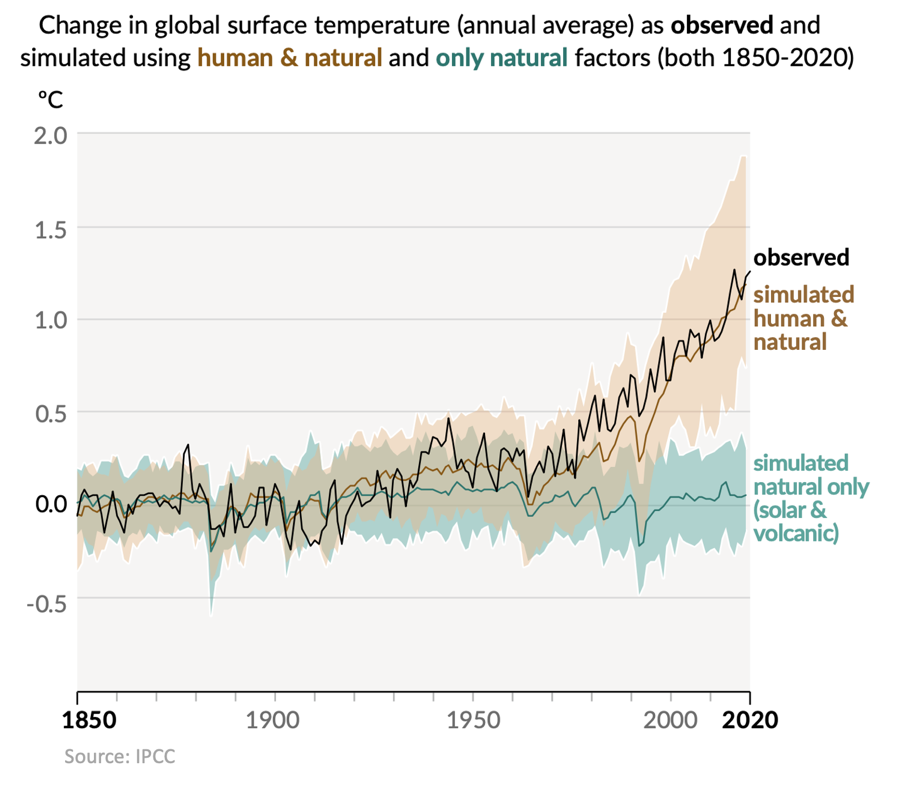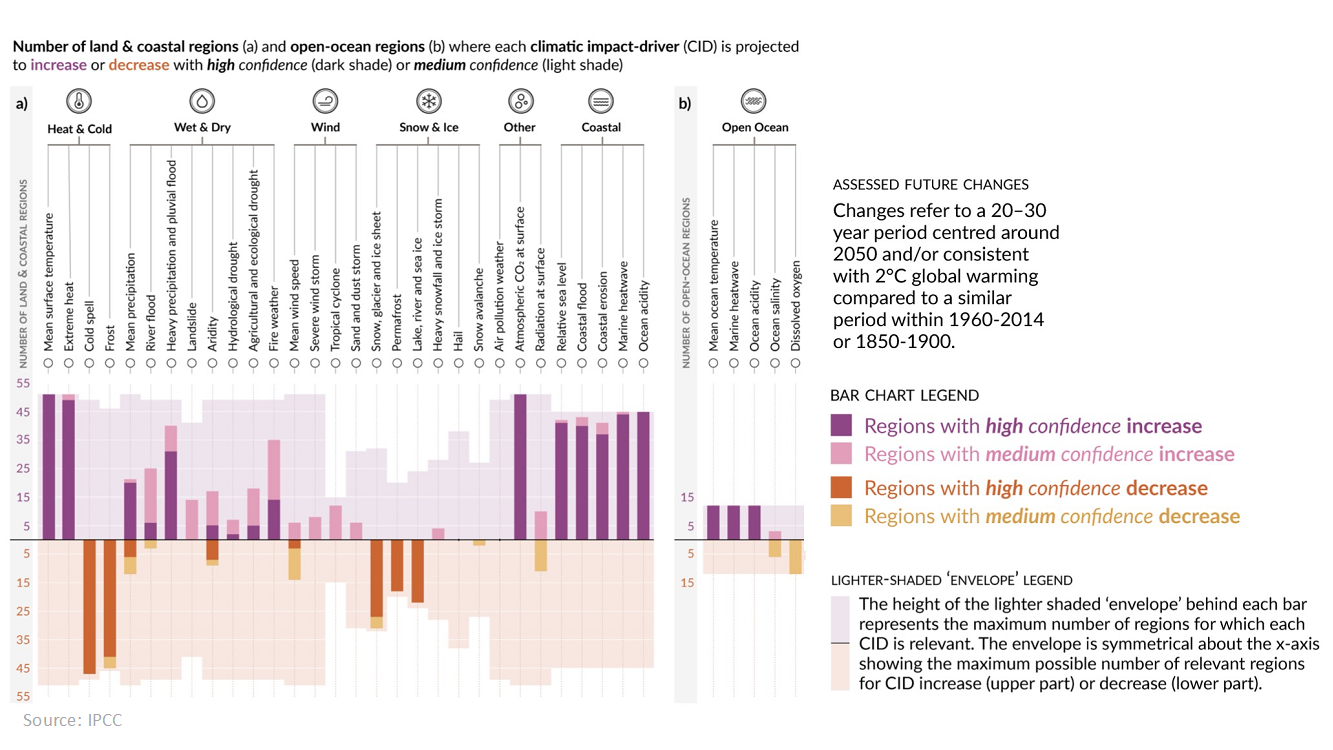Nilar Industry Highlights – Climate Change Cannot be Ignored

Despite all the other serious things occurring around the world, a subject consuming a large amount of the scientific community has been climate change. In the last couple weeks, there was a noticeable surge in the conversation, and it is no coincidence. Recently, the Intergovernmental Panel on Climate Change (IPCC) of the United Nations released their sixth assessment report, and it has been one of the more definitive and direct analyses on the global situation. Instead of implying that there are many factors and humans are one of the contributors, this report is declarative that the evidence of humans as a cause for climate change is overwhelming. This unambiguous statement by the scientific community within the IPCC cannot be ignored.
The IPCC was originated with the purpose of compiling research to assess the current state of global warming. The goal behind their work was to provide countries, and more specifically policymakers, with the necessary knowledge and guidance to make informed decisions. From a diverse group of the contributors representing multiple countries around the world, the IPCC has released multiple informative reports over the years. As data analysis and modeling has progressed with technology improvements, their evaluation capability has evolved as well. With higher confidence than in previous publications, the IPCC group had concluded that the human-induced climate change was the main driver of the weather and climate extremes in every global region.
The exhaustive report contains a lot of details along with summaries for specific audiences. One of the primary indicators of climate change is the global surface temperature. In a nutshell, this is global warming, a term popularized in the 80’s after a NASA climate scientist utilized it in Senate testimony. It seems to be common knowledge that this temperature is increasing overall, but there has been more emphasis on it since the Paris Agreement at the United Nations Climate Change Conference of the Parties (COP21) in 2015. Some of the updated data and models from the IPCC are reflected in Figure SPM.1b below. The upward trend of the black line coincides with the progression of technological advances like the commercialization of the car and airplane, the invention of the consumer computer, and the world wide web. As seen in the graph, the average global temperature change is steadily increasing, reaching 1.26°C in 2020, warming at a higher rate than any time in the last 2000 years. In this and past reports, the IPCC acknowledges the dangers of that temperature change reaching and exceeding 1.5°C, providing scenarios of what they predict can happen in various regions around the world.

In the past, the issue of increased greenhouse gases was referred to as global warming, but that term is limiting. The phrase “climate change” encompasses all aspects of long-term change in the Earth’s climate. In Figure SPM.9 of the IPCC report, shown below, there is a pictorial representation of the predicted future changes in the global climate. The background shading in the graph represents all the regions that have potential to be affected by each climate-impact driver (CID) and the overlaying bars are the ones that will be. From this graphic, it can be seen that all regions will experience at least 5 CIDs changes over the next 20-30 years. Also, ten of the CIDs listed will affect virtually all regions (96% according to the IPCC). The mean surface temperature was already explored, but this includes the decrease in ice, frost, and snow as well as the increase of coastal flooding and erosion. Most of these predictions are considered high confidence, and none are low confidence. This means that without significant intervention, the changes highlighted are the likely future. To better visualize the temperature and precipitation affects, the IPCC created a unique tool, the interactive atlas, to see how different scenarios shape the world (interactive-atlas.ipcc.ch).

At the time of the Paris Agreement, multiple countries acknowledged the need for universal action with respect to climate change. Many world leaders formalized their commitment to slow the rise in global temperature to less than 2°C and to establish a methodology to keep it from growing again. The framework was encouraging and there have been many regulations and policies developed to lay the groundwork. However, one of the glaring takeaways from the IPCC analysis was that despite all the global efforts in decarbonization, there is a need for more aggressive action. Within the IPCC investigation, all the models were updated to reflect the current state of temperatures and emissions, updating the predictions of the future. It became clear that the emission excess was still a problem, with key issues slowing progress. There is overwhelming and conclusive evidence that human influence has caused sustained changes to all the major elements of the climate system and continues to do so. There is embedded uncertainty in the path forward as new technologies advance since the infrastructure needed to accelerate their adoption is still in flux. The national policies and regulations within some countries need further development and the general definition of storage and its role as a distributed energy resource need clarification within the grid structure.
The report does seem timely in reiterating the central points to focus upon. There is the 26th United Nations Climate Change Conference of the Parties, known as COP26, coming up in Glasgow in November. With key subjects like this IPCC report and the unfinished Article 6 from the Paris Agreement defining the rules for international carbon markets, this single event is expected to be as significant as COP21, further uniting world leaders against climate change. This event serves as the first checkpoint of the Paris Agreement progress, with each country presenting what has been done and owning up to any shortcomings. This will be an opportunity to not only acknowledge the deficiencies highlighted in the IPCC report but also strategize on a fresh approach from here.
There are many companies around the world, each tackling a small proportion of the actions needed to combat climate change. The belief is that the solution will be a combination of many approaches. In our sector, Nilar’s goal is to have a pivotal role in renewable integration and energy storage for dispatchability as well as grid stability and flexibility. With our battery development anchored in recyclability and circular economy design, we want our continuous innovation to help drive the industry forward, improving performance and efficiency. As the IPCC concluded, “there’s no going back from some changes in the climate system. However, some changes could be slowed and others could be stopped by limiting warming.” We plan to be part of the solution.